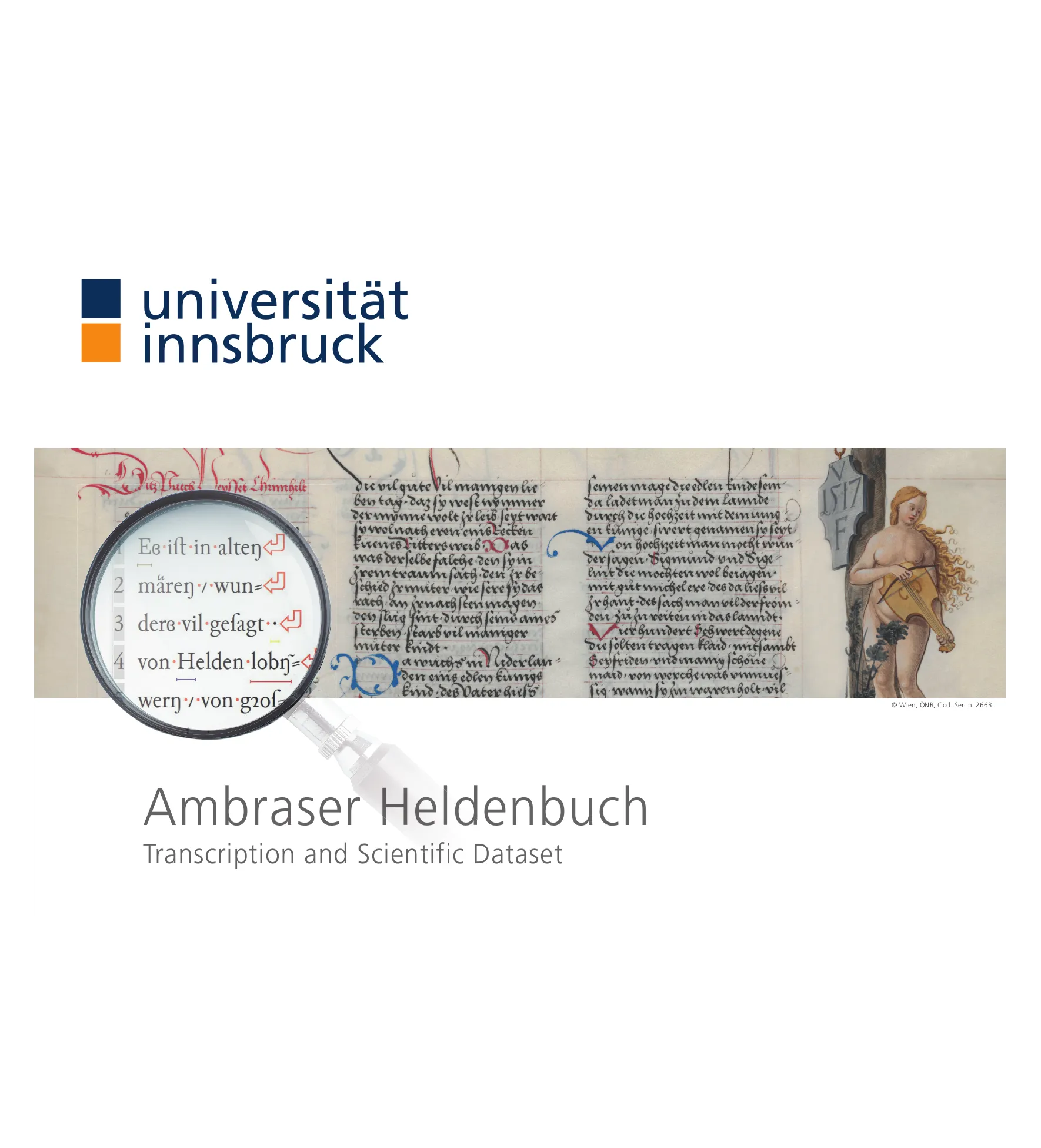
Ambraser Heldenbuch: Transcription and Scientific Dataset
- Hosting organisations
- Uni Innsbruck - Institut für Amerikastudien
- Responsible persons
- Mario Klarer
- Start
- End
The goal of the ÖAW go!digital 2.0 project “Ambraser Heldenbuch: Transcription and Scientific Dataset” is to transcribe the Ambraser Heldenbuch (Vienna, Austrian National Library, Cod. Ser. nova 2663), a text from the early 16th century, in its entirety and to provide a scientific dataset online as well as offline by 2019, which is the 500th anniversary of Emperor Maximilian I’s death. The Ambraser Heldenbuch was commissioned by Emperor Maximilian I at the beginning of the 16th century as a luxury manuscript and was written in one hand by Hans Ried, a tax collector from Bolzano, on approximately 250 large-format parchment folios. Twenty-five of the most important Middle High German texts can be found in this luxury codex (e.g. Nibelungenlied, Helmbrecht, etc.), of which fifteen are unique to the Ambraser Heldenbuch (e.g. Erec, Mauritius von Cra__ûn, etc.).
Due to the large amount of text by a single writer – the Ambraser Heldenbuch and four further documents known to be by Hans Ried (certificate, toll record, service records), comprising 500,000 words – the transcription of the entire Ried autograph is well-suited to be a unique linguistic and literary corpus:
- From a philological standpoint regarding editions, the planned corpus offers unique possibilities for the reconstruction of unique Middle High German texts which have been handed down only in the Ambraser Heldenbuch, as well as for editions and the study of parallel traditions (e.g. Nibelungenlied).
- From a linguistic and dialectological point of view, the transcription of the Ambraser Heldenbuch in combination with other documents by Hans Ried makes available a large, geographically liminal corpus poised at the transition from the Middle Ages to the early modern period, produced by a single writer.
Regarding editions, historical linguists and philologists have long perceived the transcription of the entire Ambraser Heldenbuch, and more specifically the Ried autograph, as an important desideratum of research. Thus, the goal of the ÖAW go!digital project is an elaborate state-of-the-art transcription of the entire Ambraser Heldenbuch (in combination with some shorter texts by Ried) as well as an edition of this transcription to be a data set that is citable by and accessible to the public and can serve as a reference work for a wide spectrum of research.